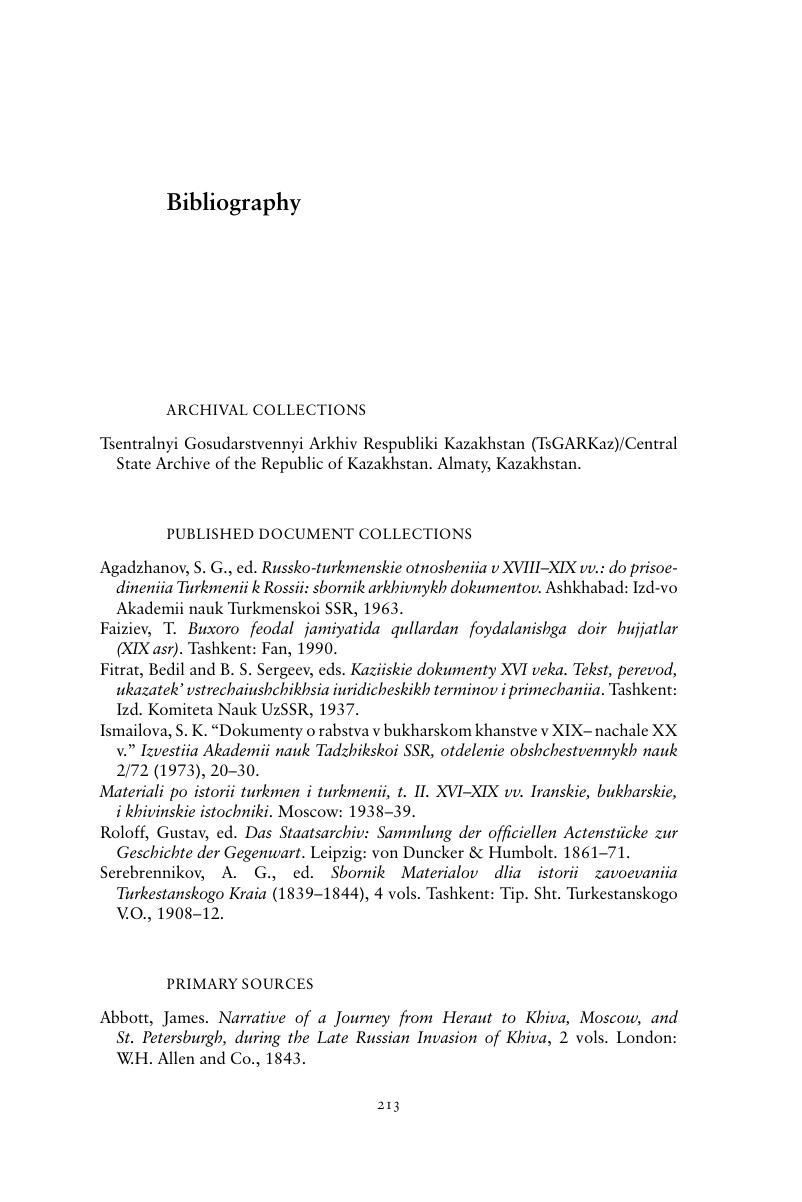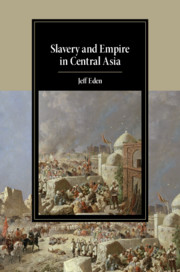Book contents
- Slavery and Empire in Central Asia
- Cambridge Studies in Islamic Civilization
- Slavery and Empire in Central Asia
- Copyright page
- Contents
- Acknowledgments
- A Brief Note on Transliteration
- Maps
- Introduction
- 1 The Setting
- 2 Beyond the Bazaars
- 3 From Despair to Liberation
- 4 The Slaves’ World
- 5 From Slaves to Serfs
- 6 The Khan as Russian Agent
- 7 The Conquest of Khiva and the Myth of Russian Abolitionism in Central Asia
- Bibliography
- Index
- Other titles in the series
- References
Bibliography
Published online by Cambridge University Press: 02 July 2018
- Slavery and Empire in Central Asia
- Cambridge Studies in Islamic Civilization
- Slavery and Empire in Central Asia
- Copyright page
- Contents
- Acknowledgments
- A Brief Note on Transliteration
- Maps
- Introduction
- 1 The Setting
- 2 Beyond the Bazaars
- 3 From Despair to Liberation
- 4 The Slaves’ World
- 5 From Slaves to Serfs
- 6 The Khan as Russian Agent
- 7 The Conquest of Khiva and the Myth of Russian Abolitionism in Central Asia
- Bibliography
- Index
- Other titles in the series
- References
Summary

- Type
- Chapter
- Information
- Slavery and Empire in Central Asia , pp. 213 - 221Publisher: Cambridge University PressPrint publication year: 2018



